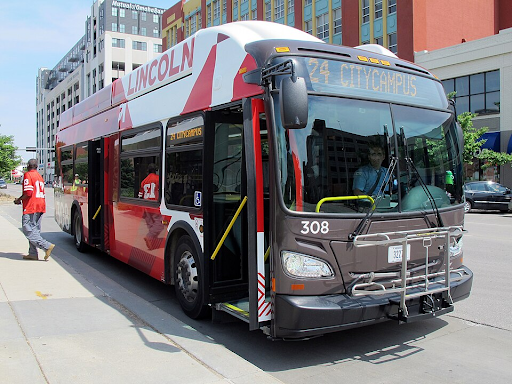Cars are extremely prevalent in Lincoln, Nebraska, so prevalent, in fact, that only a mere 5% of Lincoln, Nebraska residents actually use public transportation. When it comes to almost everywhere else in the world, the majority prefers buses, taxis or even Uber. So why is Lincoln lacking in public transportation to the point where barely anyone actually uses it?
The answer is our current infrastructure. It doesn’t allow for the increase of public transportation that we desperately need, which limits access for most residents. Public transportation, specifically buses, can help traffic flow, traffic accidents, pollution, and-probably the most important reason-makes travel more accessible.
According to LTU Maps, 50,000 students walk to school each day, not having any other way to get to school. But when we look at the percentage of students being bused to school, 10/11Now says it’s only 9% of students.
“I can only speak to the amount of students who use school buses to get to school, and that number is 4,300,” said Phil Skoripa, the Director of Transportation for LPS when asked how many students currently rely on public transportation to get to school.
Improved public transportation would also save lives. Nationally, car crashes remain one of the biggest causes of death. By reducing the number of cars on the road, the chance of accidents drastically decreases. Each bus could potentially replace dozens of cars, making the streets safer.
As well as with pollution and the air we breathe. Obviously if there are fewer cars on the road, then there will be less pollution. Have you ever thought about just how much CO2 we could actually be saving from going into our atmosphere? Evidence shows public transportation saves 37 million metric tons of CO2 each year. To put that in perspective, that’s the same as someone driving 91 billion miles, or essentially driving around the entire planet 4 million times.
“A bus only needs 3 people on it to save more CO2 than it uses up in its routes,” said Seth Bridgeford, a current student at Lincoln East High School who takes the bus every day to school and work.
Not everyone can afford buying, insuring, and fueling a car. Those who can’t are left with no other option than long walks or biking. Expanding bus service and routes would open new opportunities for students and workers who need affordable and reliable transportation that won’t take the time and effort that walking or biking does.
“It is very cheap,” Bridgeford said, “Every experience I’ve had on the bus, I’ve always felt safe.”
Of course, developing better transit requires funding. It means prioritizing long-term benefits over short-term costs. Other US cities have proven it’s possible. Omaha has invested rapidly into bus transportation. Kansas City has piloted free bus service. And that’s just in the Midwest, not to mention New York or California.
“The first step I would take would be creating a Multi-Model Transportation Center like StarTran started doing in 2020,” Thomas Shafer, the Assistant Director of Transportation for Lincoln, Nebraska, said. Lincoln has shown that it wants to go more into the direction of public transit, it just needs that extra push.
A more accessible public transportation system reduces traffic and pollution. The 5% doesn’t reflect a lack of interest, but a lack of investment. If the city makes buses a real option, more residents will flock to it. And Lincoln will be better for it.




